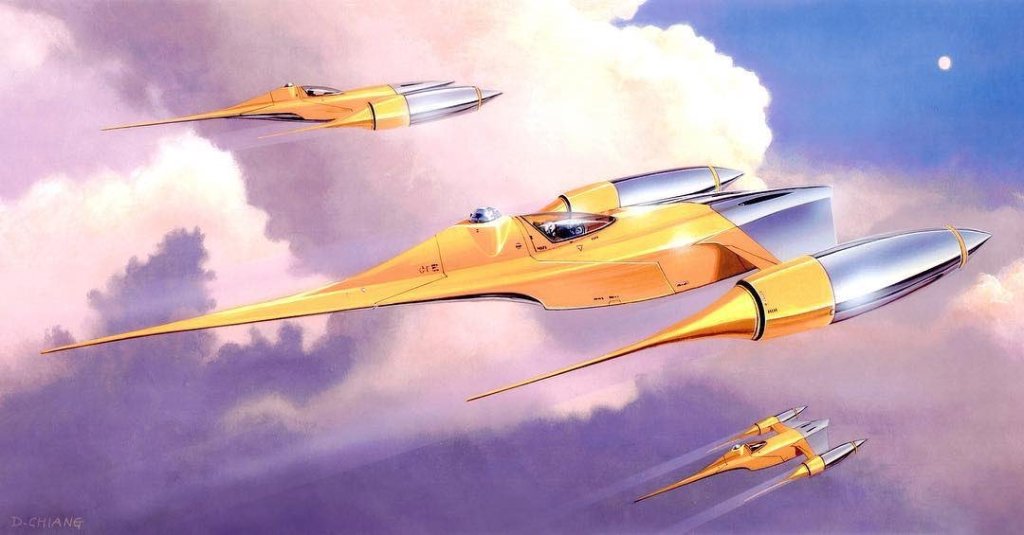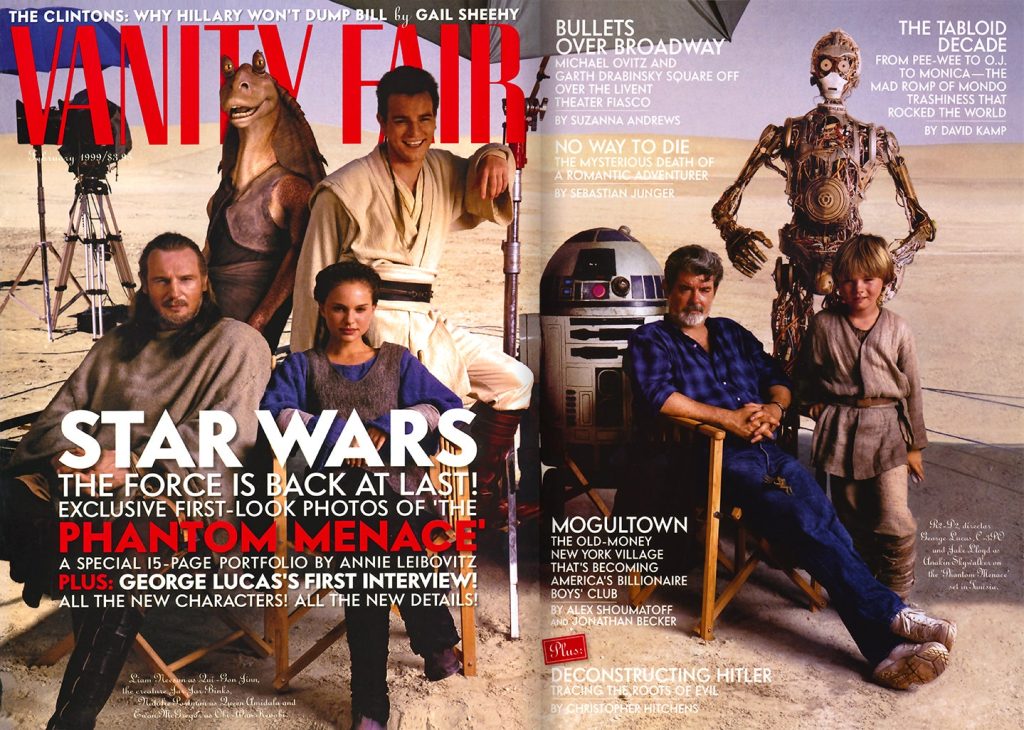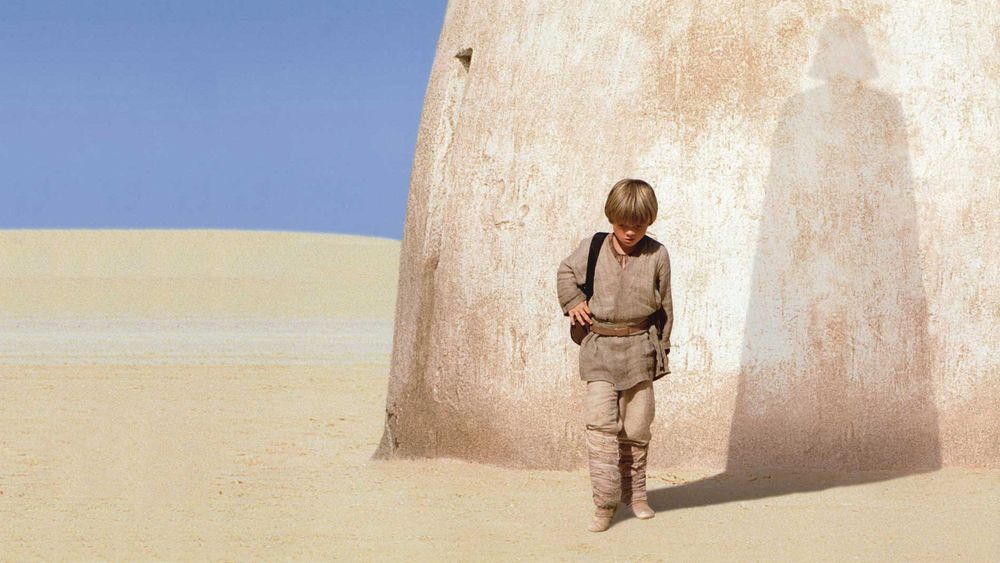It’s hard to believe The Phantom Menace turns 20 today. The years have flown by like a quick lap of the Boonta Eve podrace.
Two decades on, it still remains divisive. But, with The Last Jedi now the punching bag of the Star Wars universe, The Phantom Menace can breathe a sigh of relief that it’s no longer the most hated film of the franchise.
So, on its 20th anniversary, maybe today’s the day to talk about its legacy.
Yes, it has flaws. It can be argued the movie is the product of a ring rusty filmmaker who hadn’t written and directed for 22 years.
You can, of course, find plenty of criticism and vitriol online if that’s your thing – enough to fill the hold of a certain Corellian freighter in fact – but I’d rather focus on what the movie gave us rather than what it didn’t.
A Different Beast
Anticipation for The Phantom Menace was 16 years in the making. Crushed under a tidal wave of hype and expectation, its fall was inevitable.
For many, it was a different beast to the one they expected. Fans were angered by the slow and deliberate story. Instead of civil war, we got trade disputes and dry politics instead of balls to the wall action.
Controversially, George Lucas started the prequel trilogy with the story of a nine-year-old boy.
And Midi-chlorians? Let’s not go there.
The thing is, we were given the singular vision of an independent filmmaker famous for preserving his creative freedom to tell the stories he wants. Remember, it was Lucas’ dogged determination that got Episode IV: A New Hope made way back in 1977.
The Phantom Menace was a similar vision – a movie free of meddling studio execs insisting on something safe and familiar (probably a carbon copy of A New Hope). Lucas gave viewers his personal vision for Episode 1, made the way he wanted it. In modern Hollywood, this should be applauded.
World Building
Lucas’ vision, imagination and world building in The Phantom Menace are magnificent. It’s still a bold, innovative and visually stunning movie.
Stylistically and tonally, it’s deliberately different to the original trilogy (OT). Design director, Doug Chiang, describes it as being “richer and more like a period piece, since it was the history leading up to A New Hope.”
Unlike the straight-forward narrative and military/industrial style of the OT, the film gave us a somewhat wider, complex and nuanced story.
Design wise, the renaissance architecture of Naboo is rich and glorious – you can almost feel the Mediterranean-like sunshine and vibrant culture.

The art nouveau-inspired Gungan underwater city is beautiful and alien, in contrast to Coruscant, with its cosmopolitan skyscrapers and urban crawl.
We shouldn’t forget the sleek aesthetics of the Naboo starfighters or the Nubian royal starship, either.
We visited Tatooine again – led down the backstreets of Mos Espa and invited into the homes and workplaces of its denizens.
Nor should we forget the exhilarating and reverberating visuals and sounds of the pod race as it screamed across the desert landscape.
Then there’s the movie’s rich costume design, suggesting a society more sophisticated than the one seen in the OT. Queen Amidala, her Orient inspired outfits and makeup, coming to life on the screen.
Darth Maul, also, with his gothic black robes, devil horns and red and black tattoos, evokes images of Japanese demons, while Qui-Gon Jinn and Obi-Wan’s Jedi remind us of Samurai.
Importantly, the production design and set pieces (the pod race and climactic lightsaber battle) are visually stunning – they serve the story, not the other way round.
Duel of the Fates
Gluing it all together is John Williams’ epic score.
The ominous, choral-led Duel of the Fates theme underpinning what is by far the saga’s best lightsaber battle; The fight between Maul, Kenobi and Jinn.
It’s a spiritual movie, too. Anakin Skywalker is the chosen one – prophesied to bring balance to the Force. Episode 1 foreshadows his fall from grace when he later betrays his loved ones and brothers in arms.
Carrying out the devil’s work is Darth Maul, his demon-like appearance again referencing the movie’s spiritual subtext. Even the title, The Phantom Menace, suggest higher powers at play.

Which brings us to Senator Palpatine – the real Phantom Menace.
The two-faced, calculating and Machiavellian politician is a different kind of antagonist. He’s a master manipulator and conspirator. Yes we suspect (know) his secret Sith identity, and we enjoy this knowledge at the expense of the Jedi Counsel and Galactic Senate. Despite his appearance, Palpatine is the movie’s strongest villain.
A Second Chance
The battle for the heart and soul of The Phantom Menace has been fought along two demographic fractures – Generation X and The Millennials.
Fans who grew up in the 1970s and 80s will probably always hate the movie. For some, their disappointment is real and ubiquitous – they are not for turning.
But, the ill-will towards Episode 1 has mellowed over time with a shift in how it is viewed.
For older fanboys, arguments about the film’s evils are now said and done. They have moved on, with many choosing to forget and ignore the movie (and prequels) entirely.
The others grew up.
Rightly or wrongly, George Lucas made The Phantom Menace for children – a new generation superseding those of the 70s and 80s.

When released, Episode 1 was probably the first experience of Star Wars these millennial kids had. Like the older fans of the OT, their childhood was shaped by the saga, but this time with heroes like Anakin and Padme (and dare I say it, Jar Jar Binks), not Luke, Leia or Han.
These younglings would eventually have access to six era-jumping movies and a new plethora of toys, comics and video games. Now in their 20s and 30s (some now with children of their own) these girls and boys can nostalgically look back and celebrate a childhood enriched by Star Wars, starting with The Phantom Menace.
A Warm, Fuzzy Feeling
Thinking back to the early summer of 1999 brings back happy memories. The world was saturated with Episode 1. From posters to Pepsi cans – the hype and excitement was unreal.
Fan fever was stoked with the release of the first trailer in November ‘98 when it burst on to the net. There were news reports of fans buying cinema tickets to see Meet Joe Black, just so they could watch the trailer then leaving the theatre before the film began.
Many fans were still buzzing after the re-release of the original trilogy in their special edition formats. The promise of a new adventure was overwhelming – The Phantom Menace could not come soon enough.
The best memories were seeing the trailer for the first time. It was recorded on VHS; every image and word dissected by me and my friends.
The soundtrack never left the CD player.

Who could forget also the awesome teaser poster of Anakin on Tatooine casting an ominous shadow of Darth Vader?
Variety magazine boasted Annie Leibovitz’s on set photos plus George Lucas’ first Episode 1 interview.
My family – mum, dad and brother – enjoyed an evening out on premiere day. It was a special occasion for everyone.
It didn’t matter that The Phantom Menace didn’t entirely meet expectations, it was Star Wars. The Force was back on the big screen.
Despite having issues with the movie (I still hate those battles droids), I get a warm, fuzzy, nostalgic feeling every time I think back to the summer of 1999.
Nostalgia plays a big part of why people love Star Wars – the happy memories. They go together like Chewie and Han.
A Certain Point of View
With the release of The Force Awakens, some fans (me included) have revisited Episode 1.
Watching it again with fresh eyes, it’s possible to rethink the legacy of The Phantom Menace.
This is helped by much in-depth analysis of the prequels online, specifically its defences. For those interested, you can unpack near academic levels of pro arguments. One of these is Ring Theory.
Put simply, it postulates the idea of George Lucas likening the saga to poetry. As he said in the excellent ‘The Beginning’ documentary “it’s like poetry, they rhyme. Every stanza should rhyme with the last one.”
Going further, Ring Theory argues the prequels echo their corresponding original trilogy counterparts – in the case of The Phantom Menace, Anakin destroys the droid control ship the same way Luke does with the Death Star. The key difference with the prequels being that the Dark Side wins.
You can find many intelligent and passionate defences of The Phantom Menace, Attack of the Clones, and Revenge of the Sith at your fingertips. All offer a fresh and thought-provoking rethink of the films.
Best of these is The Prequels Strike Back documentary, should you be open to watching it. Remember; it all depends on a certain point of view.

The Clone Wars animated series can also take credit for breathing new life into Episode 1. It brilliantly fleshes out the prequel era, helping fans old and new in their acceptance of a story controversially told by George Lucas 20 years ago.
Acceptance
One of the most famous prequel bashers to rethink The Phantom Menace movie is Simon Pegg.
Calling the movie “a boring, turgid, confused mess,” he recently made a big u-turn in his acceptance of Episode 1 and George Lucas.
“For all the complaining that I’d done,” he says, “there was something amazing about his imagination. I do feel like his voice is missing from the current ones.”
Pegg’s contrition highlights the retro tone of The Force Awakens under Disney, and how different it is to the first prequel movie.
Love or hate The Phantom Menace, Mr Lucas reinforces a point made above: “My previous Star Wars films involved constant innovation. I worked very hard to make them completely different, with different planets, with different spaceships – to make it new.”
Episode 1: The Phantom Menace gave new depth to the Star Wars universe. It looked and felt different. It passed the torch to a new generation of fans, without whom there’d probably be no new movies to make and stories to tell.
The cycle will start again with young fans of the sequel trilogy.
At the very least, its legacy gives fans a great excuse to debate, discuss and dissect our favourite galaxy far, far away.
Happy anniversary.
Anthony Murphy – Editor, Rebel Briefing
Follow Rebel Briefing on Facebook @RebelBriefing or Twitter @RBriefing

Leave a comment